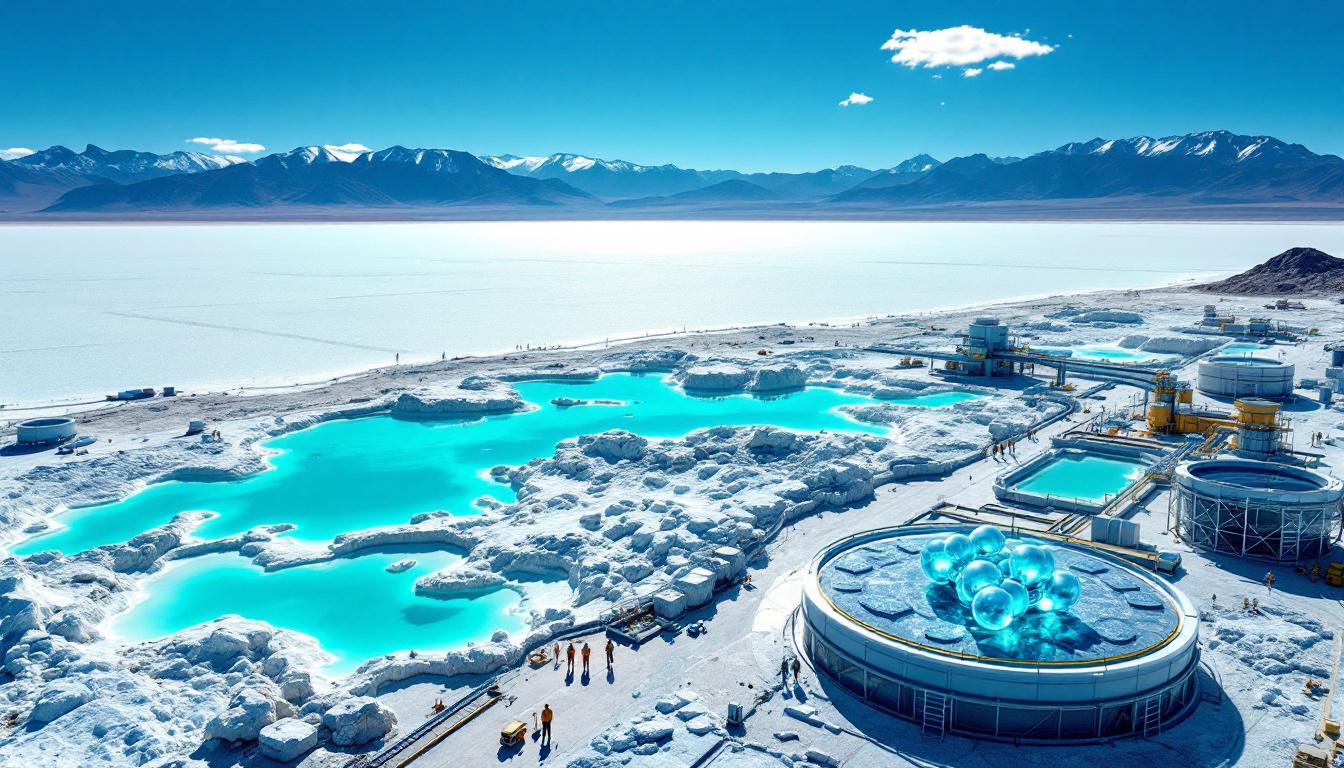China's Rare Earth Export Restrictions: Strategic Trade Moves and Global Impact
China has intensified its strategic trade maneuvering by implementing new export restrictions on rare earth elements (REEs), sending ripples through global supply chains and heightening tensions with Western nations. These restrictions represent the latest development in an escalating trade conflict that has significant implications for technology manufacturing, defense systems, and clean energy initiatives worldwide.
What Are China's New Rare Earth Export Controls?
China recently added seven additional rare earth elements to its dual-use export control list, significantly expanding the scope of materials under government scrutiny. The newly restricted elements include yttrium, dysprosium, and terbium – critical components in technologies ranging from jet engines and electric vehicles to wind turbines and precision-guided weapons systems.
According to the US Geological Survey, global yttrium production is estimated at only 20,000 tonnes annually, highlighting the scarcity of these materials despite their outsized importance in modern technology. Terbium, another newly restricted element, is essential for manufacturing high-performance permanent magnets used in wind turbines and electric vehicles, with global production even more limited.
"The dual-use classification allows Beijing to increase scrutiny of buyers connected to US military supply chains without implementing outright bans that could violate World Trade Organization rules," noted Reuters in its analysis of the restrictions. This strategic approach gives China flexibility in applying pressure while maintaining plausible deniability regarding trade violations.
These new controls follow previous restrictions on five key metals implemented in February 2025 and appear to be a direct response to increased tariffs on Chinese goods imposed by the reinstated Trump administration. Industry analysts view these controls as a calculated move in China's "strategic reserve" of trade war escalation options.
Environmental scientist Dr. Zhang Wei from the Chinese Academy of Sciences explained: "These elements may be produced in small quantities compared to iron or copper, but their absence can render billion-dollar defense systems and renewable energy projects completely inoperable."
Why Does China Dominate the Rare Earth Market?
Despite their name, rare earth elements are relatively abundant in the Earth's crust. China's dominance stems not from geological fortune alone but from decades of strategic investment and policy decisions.
China currently controls approximately 60% of global rare earth mining production, a significant market share that understates its true leverage. More critically, China dominates the processing stage with roughly 90% of global output capacity, creating a bottleneck that even countries with their own mining operations struggle to overcome.
"Western underinvestment created a 20-year gap that China systematically exploited," according to an analysis from MIT Technology Review. "While Western nations focused on outsourcing manufacturing to reduce costs, China built an unrivaled vertical integration in the rare earths sector."
The Chinese advantage extends beyond production volume. The Bayan Obo mine in Inner Mongolia utilizes advanced in-situ leaching techniques that extract REEs at approximately $3 per kilogram, compared to $8 per kilogram at competitors' sites. Additionally, Chinese facilities have perfected automated separation systems that achieve 99.999% purity for elements like neodymium, essential for high-performance magnets.
This dominance didn't happen by accident. Since identifying rare earths as strategically critical in the 1980s, China has provided approximately $1.2 billion annually in state subsidies for REE refining infrastructure. A 2024 regulatory crackdown in Inner Mongolia further consolidated approximately 70% of domestic mining operations under state-owned enterprise Shenghe Resources, strengthening government control.
Professor Liu Hongqiao of Beijing University of Technology noted: "China's rare earth strategy demonstrates exceptional foresight. While these elements were considered industrial curiosities in the West, Chinese planners recognized their future value in emerging technologies decades ago."
How Will These Restrictions Impact Global Supply Chains?
The immediate effects of China's rare earth export controls include projected shortages for Western technology manufacturers, decreased supply to military contractors, and significant rare earth market volatility across rare earth markets.
According to Department of Energy Secretary Jennifer Granholm, "This is Sputnik 2.0 for critical minerals. Our defense and clean energy supply chains face unprecedented vulnerability." This vulnerability is particularly acute given that approximately 45% of US defense contractors depend on Chinese terbium for precision guidance systems.
The International Energy Agency projects a potential 300% price surge for dysprosium by Q3 2025 if restrictions persist, threatening manufacturing timelines for electric vehicles and wind turbines. Goldman Sachs analysts suggest automakers may delay the launch of up to 2 million electric vehicles through 2026 due to magnet shortages and cost increases.
The technical reality compounds these challenges. Rare earth elements constitute approximately 30% by weight in permanent magnets used for offshore wind turbines, and just-in-time inventory systems have left Western manufacturers with less than three months of stockpiles. This vulnerability was demonstrated when Tesla's Berlin gigafactory halted production for 72 hours in April 2025 due to terbium shortages.
Defense systems face similar disruptions. Raytheon has reportedly switched to alternative samarium-cobalt magnets in some systems, accepting a 15% efficiency loss to maintain production schedules. Such compromises highlight the difficult trade-offs manufacturers face when critical inputs become constrained.
Mark Thompson, rare earth commodities analyst at CRU Group, explained: "The challenge isn't just finding alternative suppliers but maintaining performance standards. A 2% reduction in magnet performance can translate to a 20% reduction in overall system efficiency for certain applications."
What Are Western Countries Doing to Reduce Dependence?
Western nations have accelerated efforts to reduce dependence on Chinese rare earths through diversification strategies, though challenges remain significant.
The United States has allocated $2.4 billion in Defense Production Act funding specifically for rare earth projects, while the European Union's Critical Raw Materials Act now mandates 15% recycling rates for these elements by 2030. Australia has designated critical minerals processing as a national priority, fast-tracking permits for new facilities and boosting global rare earth supply through initiatives like Iluka's Eneabba refinery.
These initiatives face substantial hurdles. As Rio Tinto CEO Jakob Stausholm noted, "Permitting delays add 5-7 years to new mine development in Western jurisdictions, compared to 18-24 months in competing regions." This regulatory gap creates persistent competitive disadvantages even with significant capital investment.
Innovation offers some promise. Researchers at UC Berkeley have patented a molten salt electrolysis process that recovers 92% of rare earths from electronic waste, while Idaho National Laboratory's bioleaching trials show a 40% cost reduction compared to traditional extraction methods. Apple has demonstrated practical application of recycling technology, recovering 2.3 tonnes of neodymium from discarded iPhones in 2024 using its Daisy recycling robot.
Corporate initiatives are also emerging. Rainbow Rare Earths secured a $300 million loan to expand its Phalaborwa project in South Africa, while Lynas Corporation's stock price rose 32% following China's announcement as investors recognized its potential as an alternative supplier.
"Recycling alone can't close the gap – we need wartime-scale mining investments," warned Simon Moores of Benchmark Minerals Intelligence. "Western nations must decide if they're serious about supply security or merely performing security theater."
How Does This Fit Into Broader US-China Trade Tensions?
China's rare earth export restrictions represent just one front in an escalating economic conflict between the world's two largest economies.
Approximately 28% of Chinese exports to the United States are now subject to retaliatory tariffs, with the US-China trade deficit in critical minerals reaching $4.7 billion in 2024. This imbalance creates both vulnerability and leverage that Chinese policymakers appear increasingly willing to exploit.
"Rare earths are the new oil in great power competition," according to a recent Center for Strategic and International Studies report. "They provide asymmetric leverage that can be applied with precision against specific industries or defense systems."
The technical dimensions of this conflict continue to evolve. A Section 301 investigation is ongoing regarding alleged Chinese rare earth "dumping" at prices approximately 30% below production costs, while World Trade Organization dispute DS589 challenges the dual-use designation of certain elements as a non-tariff barrier to trade.
Policy responses reflect heightened concern. The 2024 National Defense Authorization Act banned Chinese rare earths in hypersonic glide vehicles, while the European Union initiated an anti-subsidy probe into Chinese magnetic materials in March 2025. These measures suggest a growing willingness to confront China's strategic positioning directly in what analysts are calling the critical minerals race.
Former National Security Council advisor Robert O'Brien highlighted a developing dilemma: "This forces NATO countries to choose between environmental and social governance goals and defense readiness. That's a strategic wedge China is intentionally driving between competing Western priorities."
FAQ: Understanding China's Rare Earth Export Controls
What exactly are rare earth elements and why are they important?
Rare earth elements comprise 17 metallic elements including the 15 lanthanides plus scandium and yttrium. Despite their name, most are relatively abundant in Earth's crust but rarely occur in concentrated, economically viable deposits. Their unique magnetic, luminescent, and electrochemical properties make them irreplaceable in technologies including smartphones, electric vehicles, wind turbines, and precision-guided weapons.
How will these restrictions affect consumer electronics prices?
Consumer electronics typically contain small amounts of rare earths by volume, insulating them from immediate price shocks. However, if restrictions persist beyond 12-18 months, consumers could see price increases of 5-15% on products with motors or speakers as manufacturers absorb higher input costs. Specialized devices like MRI machines, which require substantial amounts of rare earth magnets, could see more significant price increases.
Can other countries replace China's rare earth production?
While Australia, the United States, Vietnam, and Brazil all possess significant global rare earth reserves, establishing the complex processing infrastructure needed to convert ore into usable materials requires 5-10 years and billions in investment. MP Materials in California represents the most advanced Western alternative but spent eight years reverse-engineering Chinese magnetic powder technology before achieving commercial production. Complete replacement of Chinese capacity remains at least a decade away under current investment levels.
What industries will be most affected by these restrictions?
The defense sector faces the most immediate vulnerability, particularly for systems requiring high-performance magnets like radar arrays, missile guidance systems, and submarine detection equipment. Clean energy technologies—including wind turbines and electric vehicles—face significant challenges in maintaining production targets without consistent rare earth supplies. Advanced electronics manufacturing may experience component shortages for precision motors and speakers, while healthcare equipment like MRI machines could face extended production delays. These developments continue to reshape global commodities insights and investment strategies worldwide.
Want to Spot the Next Major Mineral Discovery?
Discover why significant mineral finds like those from De Grey Mining and WA1 Resources can lead to exceptional market returns by exploring Discovery Alert's dedicated discoveries page, where their proprietary Discovery IQ model delivers real-time alerts on ASX mineral discoveries, giving you an immediate edge over the market.




